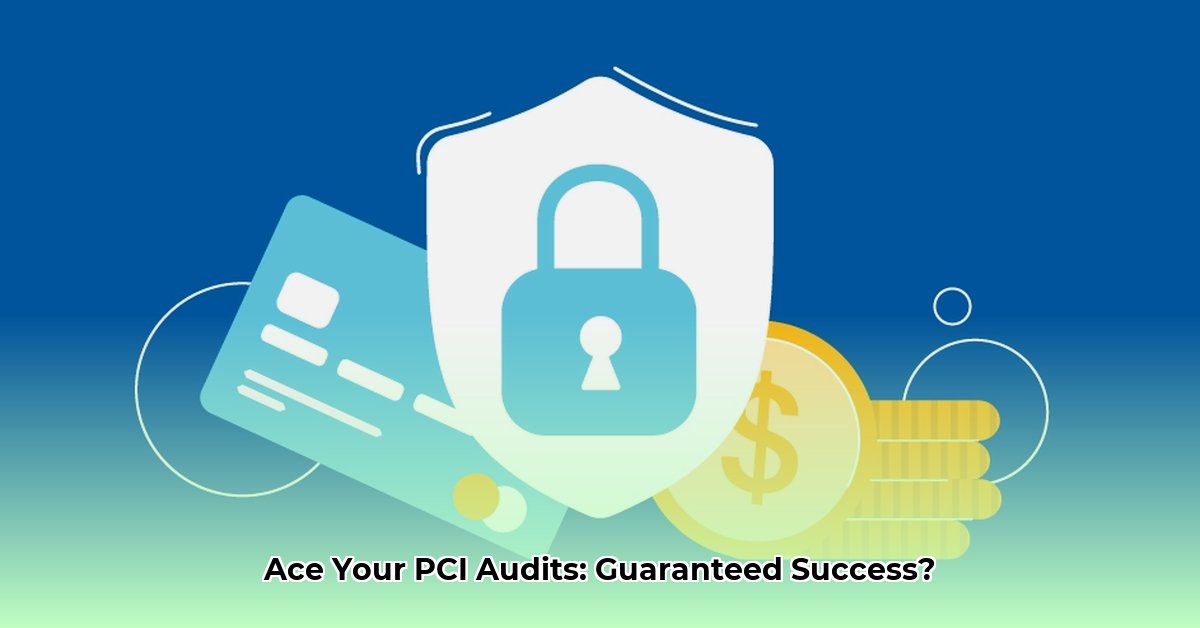
Ready to confidently navigate PCI audits and demonstrate your commitment to robust payment security? This guide provides actionable strategies to streamline the process, minimize risks, and build a strong compliance program. Remember, PCI compliance isn't just about avoiding penalties; it's about fostering trust with your customers and safeguarding their valuable data.
Understanding PCI DSS: Demystifying the Standard
The Payment Card Industry Data Security Standard (PCI DSS) might seem complex, but it's essentially a comprehensive set of rules designed to protect credit card information. Businesses that process, store, transmit, or handle credit card data must adhere to these guidelines. Non-compliance can lead to substantial fines, reputational damage, and loss of customer trust.
The standard comprises 12 key requirements, each with detailed sub-requirements. Instead of tackling everything at once, prioritize a phased approach, focusing on high-impact areas first. This strategic approach ensures efficient resource allocation and maximizes your impact.
Your PCI Audit Action Plan: A Step-by-Step Guide
This structured approach helps you systematically address PCI DSS compliance.
Comprehensive Security Assessment: Begin with a thorough evaluation of your systems and processes against the 12 PCI DSS requirements. This initial assessment identifies vulnerabilities and establishes a baseline for improvement. Think of this as a complete health check for your organization's security infrastructure.
Prioritize Critical Risks: Not all security weaknesses are equally impactful. Focus on mitigating the highest-risk vulnerabilities first, using a risk-based approach. Prioritization ensures efficient resource allocation and helps address the most immediate threats.
Continuous Monitoring & Regular Assessments: Implement ongoing monitoring and regular penetration testing and vulnerability scanning to proactively identify and address emerging threats. Regular security assessments are crucial for maintaining compliance and preventing breaches. Think of this as ongoing preventative maintenance for your security systems.
Meticulous Record Keeping: Maintain detailed documentation of your security policies, procedures, and implemented controls. This comprehensive record-keeping demonstrates your commitment to compliance and facilitates smooth audits. Accurate and organized documentation is crucial for demonstrating compliance during an audit.
Key Areas to Focus on During Your PCI Audit
These critical areas require diligent attention to ensure comprehensive security.
Network Security: The Foundation of Protection: Robust network security is paramount. This includes firewalls, intrusion detection/prevention systems (IDS/IPS), and regular vulnerability scans to protect your network against unauthorized access and malicious attacks. A strong network security foundation is critical to preventing breaches. A Data Breach can cost a company an average of $4.24 million, [Source: IBM's Cost of a Data Breach Report].
Access Control: Limiting Access to Sensitive Data: Implement strict access control measures, granting only authorized personnel access to sensitive cardholder data, adhering to the principle of least privilege. This minimizes the risk of unauthorized access and data breaches. Strong access controls are crucial for preventing unauthorized access and misuse of sensitive data.
Data Encryption: Protecting Data in Transit and at Rest: Encrypt all cardholder data both during transmission (e.g., using HTTPS) and storage (e.g., using encryption at rest). Encryption safeguards data even if compromised. Data encryption is essential for protecting sensitive information, even if a breach occurs.
Security Awareness Training: Empowering Your Workforce: Invest in comprehensive security awareness training for all employees. Educate your workforce about phishing scams, social engineering tactics, and other threats, empowering them to act as the first line of defense. Effective employee training significantly reduces the risk of human error, a major cause of breaches.
Vulnerability Management: Continuous Improvement: Regularly scan for vulnerabilities and promptly apply security patches. Proactive vulnerability management minimizes the window of opportunity for attackers to exploit weaknesses. Staying ahead of known vulnerabilities is crucial for maintaining a robust security posture.
Working with a Qualified Security Assessor (QSA): Weighing the Benefits
A QSA (Qualified Security Assessor) offers expert guidance throughout the audit process, assisting with vulnerability remediation and compliance validation. While engaging a QSA incurs a cost, consider the potential cost savings from avoiding non-compliance penalties. The decision of whether or not to hire a QSA depends on the size and complexity of your organization and its existing security infrastructure.
Beyond Compliance: Cultivating a Culture of Security
PCI DSS compliance is an ongoing journey, not a destination. Continuous improvement through regular assessments, employee training, and proactive risk management is crucial in maintaining a robust security posture. A culture of security is vital for long-term protection and minimizes vulnerability.
By diligently implementing these strategies and embracing a proactive approach, you can significantly improve your chances of successful PCI audits. Remember, it's about protecting your customers' data, building trust, and safeguarding your business's reputation.